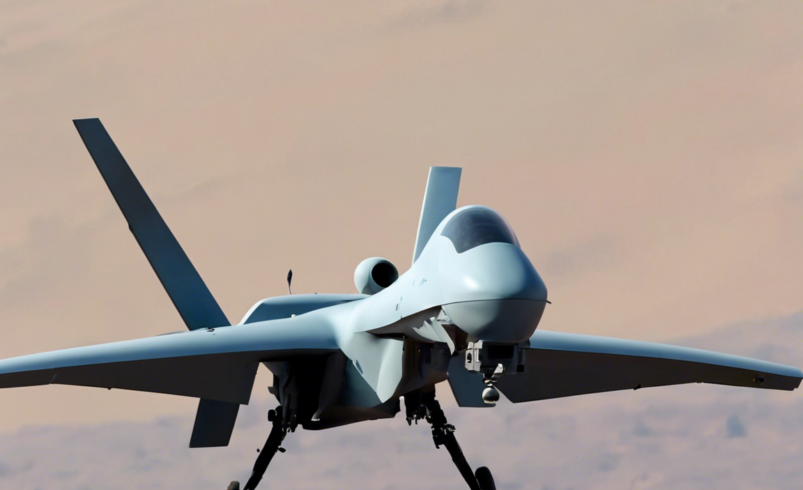Introduction
In recent years, Iran has emerged as a significant player in the realm of drone warfare, using these unmanned aerial vehicles (UAVs) to carry out attacks on their adversaries. One of the primary targets of these attacks has been Israel, a staunch enemy of the Islamic Republic. Iran’s use of drones to target Israel represents a growing threat to the security and stability of the region, with the potential to escalate into a full-blown conflict. This article delves into the rising threat posed by Iran’s drone attacks on Israel, examining the strategic implications, technological advancements, and potential responses to this evolving security challenge.
Iran’s Drone Capabilities
Iran has made significant strides in developing and deploying drones for military purposes, with a particular focus on advancing its unmanned aerial capabilities. The country boasts a diverse array of drones, ranging from small reconnaissance UAVs to armed combat drones capable of carrying out precision strikes. These drones are operated by both the Islamic Revolutionary Guard Corps (IRGC) and the Iranian military, giving Iran a versatile and potent tool for projecting power in the region.
Strategic Implications of Drone Attacks on Israel
The use of drones by Iran to target Israel carries far-reaching strategic implications for the region. By employing drones in its attacks, Iran can conduct operations against Israel with a degree of plausible deniability, making it challenging for Israel to directly attribute the attacks to Tehran. This gray zone warfare allows Iran to pursue its strategic objectives while avoiding direct confrontation with a more powerful adversary.
Moreover, Iran’s drone attacks on Israel represent a violation of Israeli sovereignty, raising the risk of escalation and potentially triggering a larger conflict in the already volatile Middle East. The use of armed drones by Iran also challenges Israel’s air defense capabilities, requiring the country to adapt its defense strategies to counter this evolving threat effectively.
Technological Advancements in Iranian Drones
Iran has invested heavily in advancing its drone technology, seeking to enhance the capabilities and effectiveness of its UAV fleet. The country has developed stealthy drones that can evade radar detection, long-endurance drones capable of conducting extended surveillance missions, and armed drones equipped with precision-guided munitions for targeted strikes.
Furthermore, Iran has demonstrated its ability to reverse-engineer and replicate foreign drone technology, showcasing a high degree of technical proficiency in this field. By leveraging cyber warfare and electronic warfare capabilities, Iran can disrupt and deceive enemy air defense systems, enabling its drones to penetrate deep into Israeli airspace and carry out attacks with precision.
Potential Responses to Iran’s Drone Threat
As Iran continues to expand its drone capabilities and conduct attacks on Israel, there is a growing need for effective responses to counter this emerging threat. Israel has already taken steps to enhance its air defense systems, including deploying anti-drone technology to detect and intercept hostile UAVs. Additionally, Israel has conducted airstrikes against Iranian drone facilities and supply routes to disrupt Iran’s drone operations.
International actors, including the United States and European allies, have also expressed concern over Iran’s use of drones to target Israel and have called for diplomatic and economic measures to deter further aggression. Efforts to de-escalate tensions and engage in dialogue with Iran are essential to preventing the conflict from spiraling out of control.
Conclusion
Iran’s drone attacks on Israel represent a significant security challenge with far-reaching implications for the region. By leveraging advanced drone technology, Iran has demonstrated its ability to target Israel effectively while operating in a gray zone between peace and war. As the threat posed by Iranian drones continues to evolve, it is imperative for regional and international stakeholders to work together to address this growing security concern and prevent further escalation of tensions.
FAQs
-
What types of drones does Iran use to target Israel?
Iran employs a range of drones, including small reconnaissance UAVs and armed combat drones equipped with precision-guided munitions. -
How has Israel responded to Iran’s drone attacks?
Israel has enhanced its air defense systems, deployed anti-drone technology, and conducted airstrikes against Iranian drone facilities to counter the threat. -
What strategic implications do Iran’s drone attacks on Israel carry?
Iran’s use of drones allows for plausible deniability and challenges Israel’s air defense capabilities, potentially leading to escalation in the region. -
What technological advancements has Iran made in the field of drones?
Iran has developed stealthy drones, long-endurance drones, and armed drones, demonstrating a high level of technical proficiency in drone technology. -
What can the international community do to address the threat of Iranian drones targeting Israel?
International actors can engage in diplomatic efforts, implement economic measures, and support de-escalation initiatives to deter further aggression by Iran.






